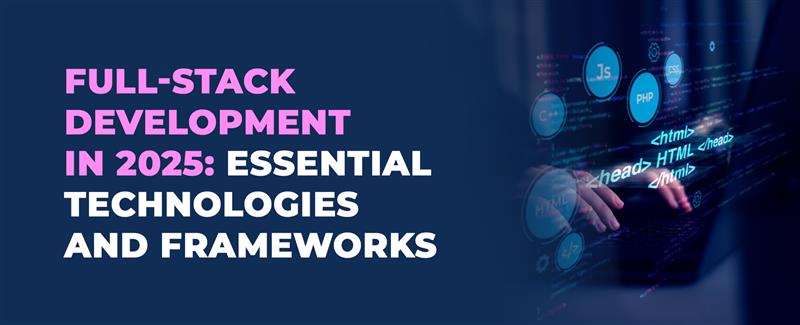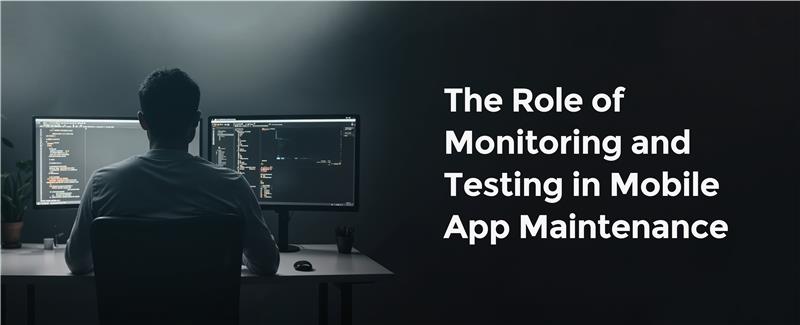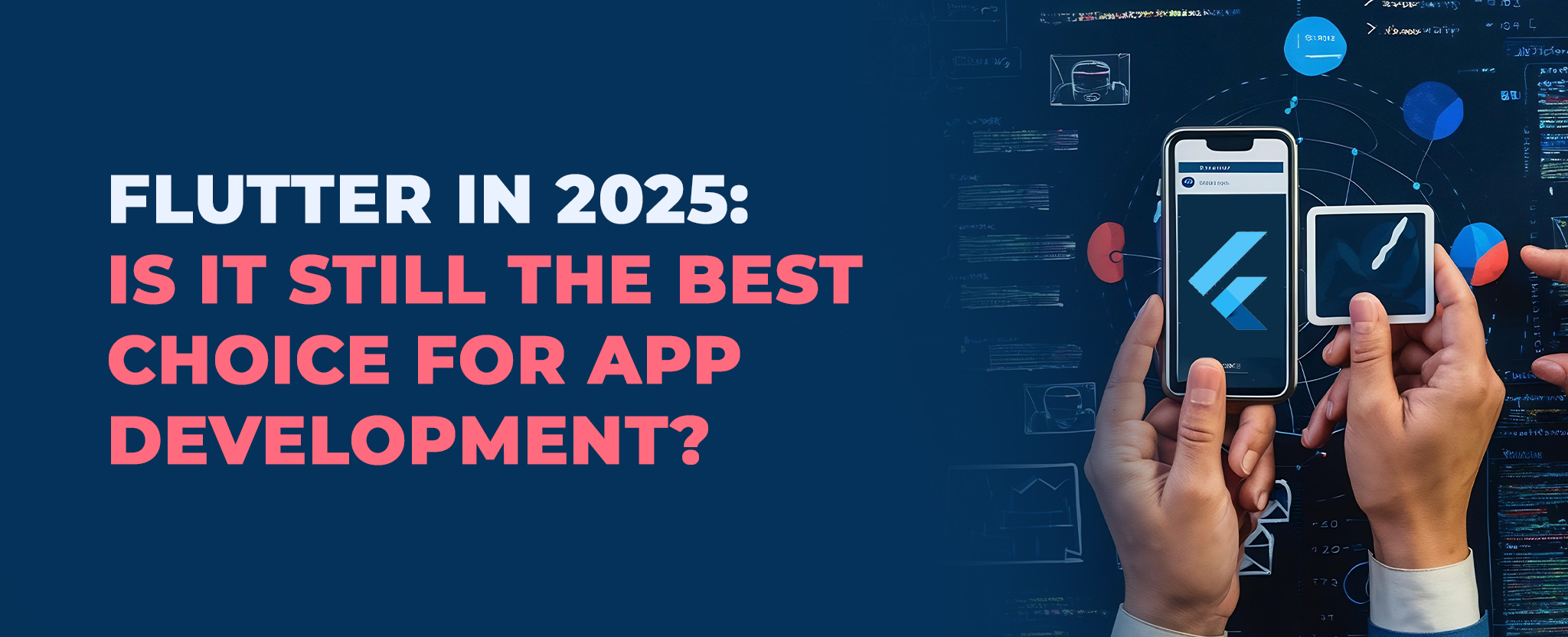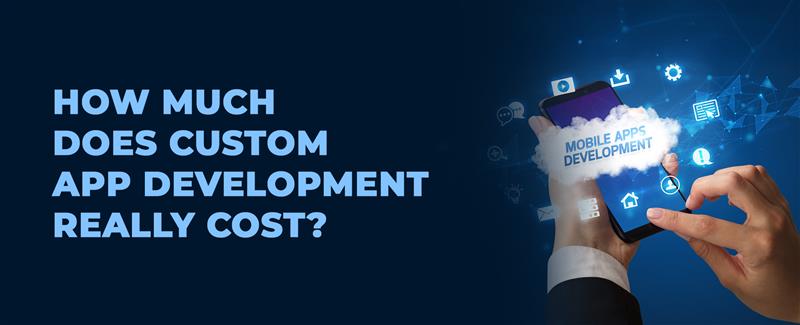Full-Stack Development in 2025: Essential Technologies and Frameworks
27 Sep 25 


The world of full-stack development has transformed dramatically over the past few years, and 2025 represents a pivotal moment in web development. With new technologies emerging and existing frameworks evolving at breakneck speed, developers face both exciting opportunities and complex choices. This comprehensive guide explores the essential technologies, frameworks, and practices that define full-stack development in 2025, providing you with the knowledge needed to navigate this dynamic landscape successfully.
Understanding Full-Stack Development in the Modern Era
Full-stack development encompasses the complete spectrum of web application development, from user interfaces to server architecture, databases, and deployment infrastructure. A full-stack developer possesses the versatility to work across all layers of an application, understanding how each component interacts with others to create seamless user experiences.
In 2025, full-stack development has evolved beyond simply knowing frontend and backend technologies. Modern full-stack developers must understand cloud services, containerization, continuous integration and deployment, security practices, and performance optimization. They serve as the bridge between different teams and technologies, making them invaluable assets in today’s development landscape.
The role has also expanded to include understanding user experience principles, basic DevOps practices, and even elements of data science and machine learning integration. This evolution reflects the increasing complexity of modern web applications and the need for developers who can think holistically about software solutions.
Frontend Technologies Leading in 2025
React 18+ and Beyond
React remains the most popular frontend framework, with its latest versions offering improved performance through features like concurrent rendering and automatic batching. React’s ecosystem continues to grow stronger with tools like Next.js for server-side rendering and React Query for data fetching.
Vue.js 3
Vue.js has gained significant traction with its composition API and improved TypeScript support. The framework strikes a perfect balance between simplicity and power, making it an excellent choice for both small projects and enterprise applications.
Angular 17+
Angular has streamlined significantly, offering better developer experience with standalone components and improved build tools. The framework remains strong in enterprise environments where structure and scalability are priorities.
Svelte and SvelteKit
Svelte continues to impress developers with its compile-time optimizations and smaller bundle sizes. SvelteKit provides a full-stack framework experience that’s becoming increasingly popular for performance-critical applications.
Also read Best Cross-Platform Mobile App Development Tools for 2024 And Their Defining Features
Backend Technologies Dominating 2025
Node.js with Express and Fastify
Node.js remains a top choice for JavaScript developers who want to use the same language across their entire stack. Express.js continues to be widely used, while Fastify gains popularity for its superior performance and developer experience.
Python with FastAPI and Django
Python’s popularity in web development continues to grow. FastAPI has emerged as a modern, fast framework for building APIs, while Django remains the go-to choice for full-featured web applications with built-in admin panels and ORM.
Go (Golang)
Go has established itself as an excellent choice for building high-performance backend services. Its simplicity, built-in concurrency features, and fast compilation make it ideal for microservices and API development.
Rust
While still emerging in web development, Rust is gaining attention for its memory safety and performance. Frameworks like Actix-web and Axum are making Rust more accessible for web developers.
Database Technologies
PostgreSQL
PostgreSQL continues to be the preferred choice for many developers due to its reliability, advanced features, and excellent JSON support. It works well for both relational and document-style data storage.
MongoDB
MongoDB remains popular for applications that need flexible schema design. Its document-based approach works well with JavaScript-heavy stacks and rapid prototyping.
Redis
Redis is essential for caching, session storage, and real-time applications. Its versatility makes it a valuable addition to almost any stack.
Supabase and PlanetScale
These modern database platforms are changing how developers think about database management, offering features like real-time subscriptions, automatic scaling, and branching for databases.
Essential Development Tools and Practices
TypeScript
TypeScript has become nearly mandatory for serious JavaScript development. It provides type safety, better IDE support, and helps catch errors before they reach production.
Docker and Containerization
Docker continues to be crucial for development environment consistency and deployment. Understanding containerization is essential for modern full-stack developers.
Version Control with Git
Git remains the standard for version control, with platforms like GitHub, GitLab, and Bitbucket providing additional collaboration features.
Testing Frameworks
Testing is more important than ever. Popular choices include Jest for JavaScript testing, Pytest for Python, and Cypress or Playwright for end-to-end testing.
Cloud Platforms and Deployment
Vercel and Netlify
These platforms have revolutionized frontend deployment with their focus on developer experience and automatic deployments from Git repositories.
AWS, Google Cloud, and Azure
The major cloud providers continue to offer comprehensive solutions for hosting, databases, and various services needed for full-stack applications.
Railway and Render
These newer platforms are gaining popularity for their simplicity and developer-friendly pricing models, making deployment accessible to individual developers and small teams.
API Development and Integration
REST APIs
REST remains the most common approach for API development, providing a standardized way for frontend and backend systems to communicate.
GraphQL
GraphQL offers more flexibility in data fetching, allowing clients to request exactly the data they need. It’s particularly useful for complex applications with multiple data sources.
tRPC
For TypeScript applications, tRPC provides end-to-end type safety for API calls, eliminating the need for code generation or manual type definitions.
Emerging Trends to Watch
WebAssembly (WASM)
WebAssembly is opening new possibilities for running high-performance code in browsers, enabling languages like Rust and C++ to run on the web.
Edge Computing
Platforms like Cloudflare Workers and Vercel Edge Functions are pushing computation closer to users for better performance.
Jamstack Architecture
The Jamstack (JavaScript, APIs, and Markup) continues to grow, emphasizing pre-built markup and serverless functions for better performance and security.
Getting Started: Recommended Learning Path
If you’re new to full-stack development or looking to update your skills, consider this learning path:
- Start with the Fundamentals: Master HTML, CSS, and JavaScript before moving to frameworks.
- Choose a Frontend Framework: Pick React, Vue, or Angular based on your preferences and job market demands.
- Learn a Backend Technology: Start with Node.js if you’re comfortable with JavaScript, or explore Python with FastAPI for a different approach.
- Understand Databases: Learn SQL basics and get comfortable with PostgreSQL, then explore NoSQL options like MongoDB.
- Practice DevOps Basics: Learn Git, understand Docker basics, and get familiar with cloud deployment.
- Build Projects: Create full applications that demonstrate your skills across the entire stack.
Tips for Success in 2025
Focus on Fundamentals
While frameworks change, strong fundamentals in programming concepts, data structures, and system design remain valuable throughout your career.
Stay Updated but Don’t Chase Every Trend
The technology landscape moves quickly, but focus on mastering a few technologies deeply rather than trying to learn everything superficially.
Build a Strong Portfolio
Create projects that showcase your full-stack capabilities. Include both personal projects and contributions to open-source software.
Learn Continuously
Set aside time for learning new technologies and keeping up with best practices. Follow industry blogs, attend conferences, and participate in developer communities.
Practice System Design
Understanding how to architect scalable applications becomes increasingly important as you advance in your career.
Conclusion
Full-stack development in 2025 offers exciting opportunities with mature tools and frameworks that make building complex applications more accessible than ever. The key to success lies in building strong fundamentals while staying adaptable to new technologies and practices.
Whether you choose the JavaScript ecosystem with React and Node.js, explore Python with FastAPI, or dive into modern alternatives like Go or Rust, the important thing is to start building and learning. The demand for skilled full-stack developers continues to grow, and mastering these essential technologies will position you well for a successful career in web development.
Remember that becoming proficient in full-stack development takes time and practice. Focus on building real projects, contributing to open source, and continuously learning from the vibrant developer community. The technologies mentioned in this guide provide a solid foundation, but the most important skill is the ability to adapt and learn new tools as the industry evolves.
Ready to accelerate your full-stack development journey? Mindster offers comprehensive training programs and expert guidance to help you master these essential technologies. Whether you’re just starting out or looking to upgrade your skills with the latest frameworks, Mindster’s structured learning approach can help you become a proficient full-stack developer faster. Take the next step in your career and explore what Mindster has to offer for aspiring and experienced developers alike.
- Agentic AI1
- Android Development3
- Artificial Intelligence31
- Classified App3
- Custom App Development5
- Digital Transformation12
- Doctor Appointment Booking App14
- Dropshipping1
- Ecommerce Apps40
- Education Apps2
- Fintech-Apps37
- Fitness App4
- Flutter4
- Flutter Apps20
- Food Delivery App5
- Grocery App Development1
- Grocery Apps3
- Health Care10
- IoT2
- Loyalty Programs9
- Matrimony Apps1
- Microsoft1
- Mobile App Maintenance2
- Mobile Apps126
- Product Engineering6
- Progressive Web Apps1
- React Native Apps2
- Saas Application2
- Shopify9
- Software Development3
- Taxi Booking Apps7
- Truck Booking App5
- UI UX Design8
- Uncategorized6
- Web App Development1



















Comments